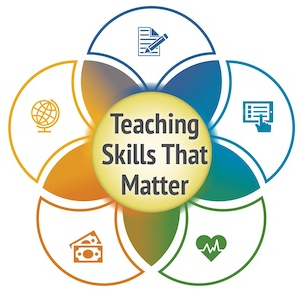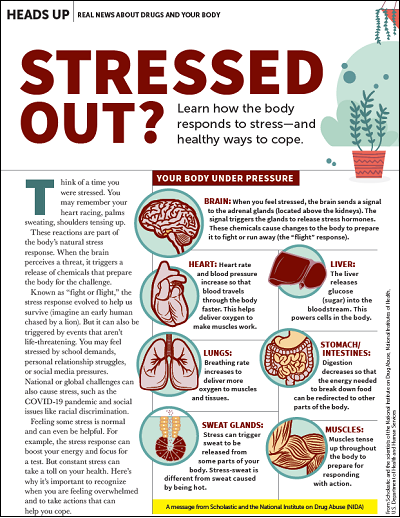- MN ABE Connect
- Archive
- Salud: More Resources for Teaching Health Literacy Skills
 November 15, 2021
November 15, 2021
Salud: More Resources for Teaching Health Literacy Skills
Stephanie Sommers, ACES CoordinatorI have often heard it said that you can’t put a price on good health. However, there is nothing quite like living through a global pandemic in which over five million people have died worldwide to really make one reflect on the value of good health. The past 20 months have shown us that our health is an asset worth protecting, and having robust health literacy skills is one of the best ways to ensure that protection.
What does it mean to have health literacy skills?
According to the Teaching Skills That Matter toolkit, “health literacy skills means having the knowledge, skills, and ability to ask relevant questions to obtain and apply information, evaluate information for credibility and quality, communicate effectively, and make critical decisions to promote one’s own health and well-being and that of one’s family and community.”
Health literacy resources
 Teaching Skills That Matter
Teaching Skills That Matter
During the Still Here, Still Awesome statewide ABE Conference on November 5, I delivered a session called Salud: Using ACES/TIF Skills to Teach Health Literacy. In that session, I shared some information about the Teaching Skills That Matter (TSTM) project and accessing the five ready-to-use the health literacy lesson plans that are included in the TSTM toolkit. The purpose of this article is to share a few more health literacy resources that Adult Education instructors might find useful.
Network of the National Library of Medicine
The Network of the National Library of Medicine has a health literacy curriculum that was designed for use with middle-school students. The curriculum has two main goals: to improve health literacy information skills and raise awareness about lead poisoning. The curriculum is shared under a Creative Commons license, which means that it can be modified and adapted.
The curriculum contains a number of case studies for students to read and analyze to determine if a person was suffering from lead poisoning, and it contains some great worksheets for helping students to evaluate the quality of a health website. One of the things that I liked best about this curriculum, however, was the pre-test that asked students to answer some questions about how they usually access health information. It includes questions like:
- Have you ever searched on the Internet for health information?
- If you have a question about a disease or medicine, where on the Internet would you look?
- Do you think this information is reliable (trustworthy)?
I believe that having students answer these questions would provide us with a great formative assessment about their critical thinking and navigating systems skills that we could use to plan transitions-minded instruction.
National Institute on Drug Abuse

Some other great resources come from the National Institute on Drug Abuse (NIDA), part of the National Institutes for Health (NIH). They have developed a number of lesson plans to be used with middle and high school level students that teach about mental health, stress, opioids, prescription stimulants, and nicotine. Using these lessons with our adult learners would honor the fact that they are also parents and caregivers to young people who might be struggling with addiction and mental health issues.
The lessons contain high quality non-fiction reading materials that are relevant and engaging. After reading and acquiring new information, students are asked to complete a task, such as creating an infographic or answering writing prompts. The lessons are very well-done and would be a great way to provide our learners with valuable, potentially life-saving information that will benefit them and their families.
Newsletter Signup
Get MN ABE Connect—the official source for ABE events, activities, and resources!
Sign UpArticle Categories
- ABE Foundations/Staff Onboarding
- ACES/Transitions
- Adult Career Pathways
- Assessment
- CCR Standards
- Citizenship
- COVID-19
- Cultural Competency
- Digital Literacy/Northstar
- Disabilities
- Distance Learning/Education
- ELA
- Equity/Inclusion
- ESL
- HSE/Adult Diploma
- Listening
- Math/Numeracy
- Mental Health
- Minnesota ABE
- One-Room Schoolhouse/Multilevel
- Professional Development
- Program Management
- Reading
- Remote Instruction
- Science
- Social Studies
- Speaking/Conversation
- Support Services
- Teaching Strategies
- Technology
- Uncategorized
- Volunteers/Tutors
- Writing